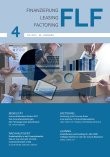Sie befinden sich hier: Home › FLF › Themenschwerpunkte › Aufsätze › Operational Excellence as No-Regret-Move
Aufsätze
30.06.2021
MOBILITÄT
Operational Excellence as No-Regret-Move
How Automotive Captives Increase Their Success

Ingo Schmuckall, Foto: Deloitte

Dieser Artikel ist Teil unseres Online-Abo Angebots.